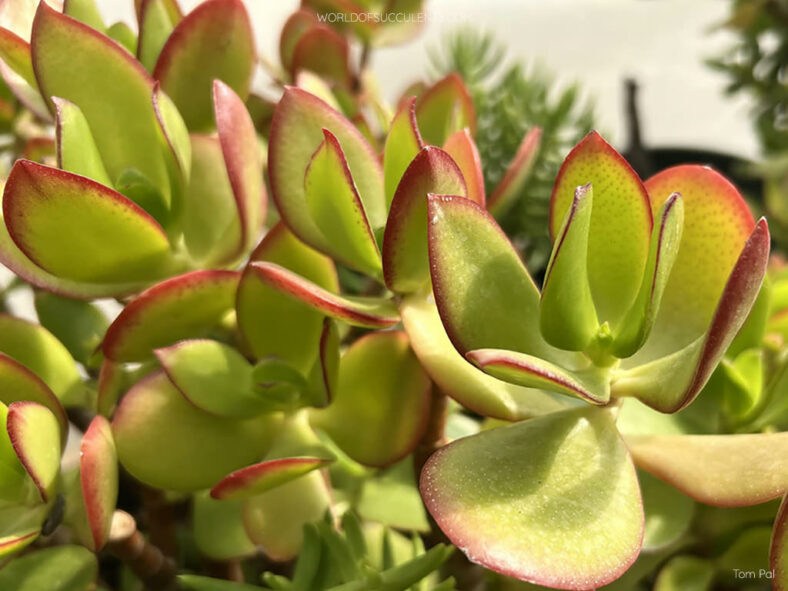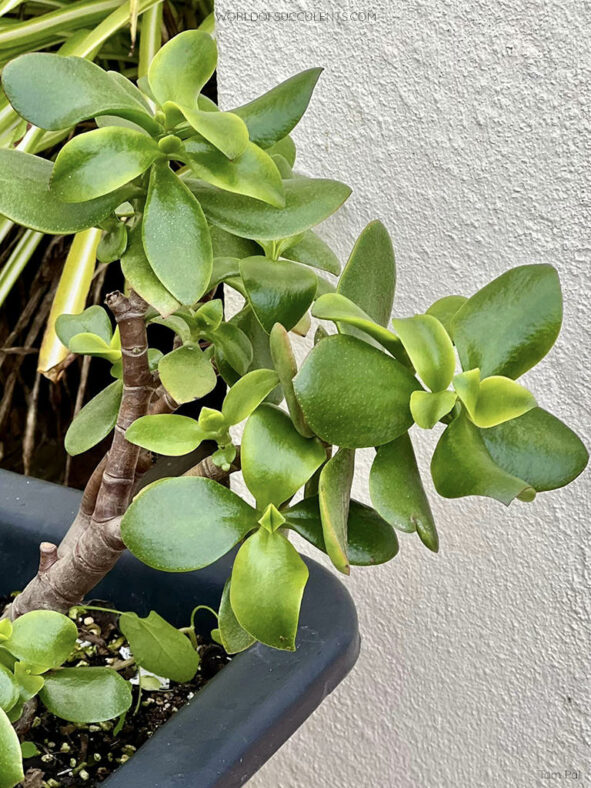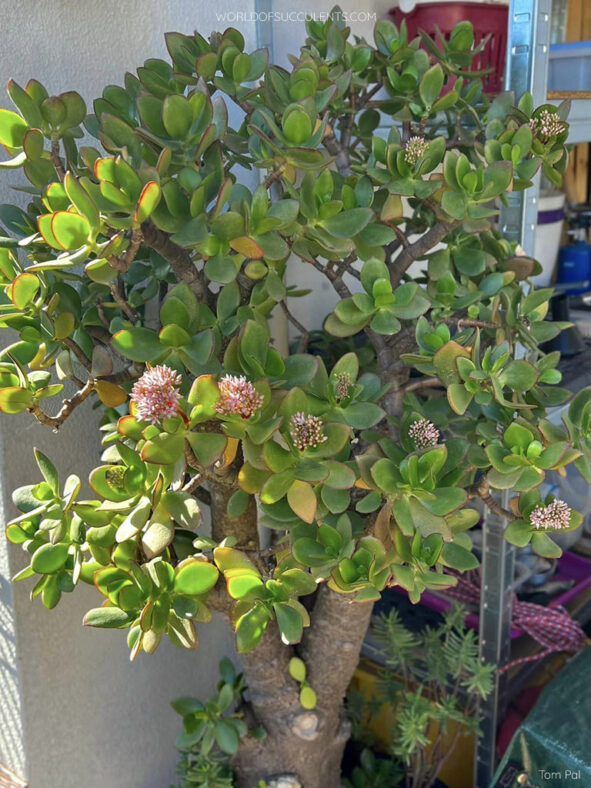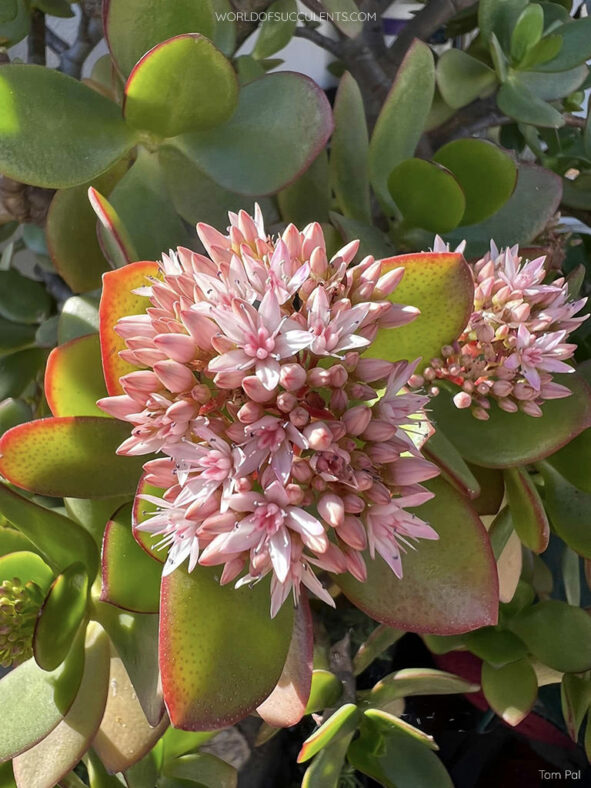Crassula ovata 'Didier Pocreau' is a reversion of Crassula ovata 'Gollum'. It differs from the typical Crassula ovata by its slightly wavy leaves and compact clusters of flowers.
Scientific Name
Crassula ovata 'Didier Pocreau'
Synonym(s)
Crassula ovata 'Didier', Crassula ovata 'Mullog'
Scientific Classification
Family: Crassulaceae
Subfamily: Crassuloideae
Genus: Crassula
Origin
Crassula ovata 'Didier Pocreau' is a cultivar that appeared in Didier Pocreau's nursery in Les Arcs, a commune in southeastern France.
Description
Crassula ovata 'Didier Pocreau', also known as Crassula ovata 'Didier' or Crassula ovata 'Mullog', is a succulent shrub with branches that bear green, slightly wavy leaves that often have reddish margins. The branches are succulent and grey-green, becoming woody as they mature. The leaves are thick, fleshy, pointed, and have sharply-edged margins. They grow in opposite pairs along the branches.
During the winter, mature Crassula ovata 'Didier Pocreau' produces star-shaped flowers in attractive compact clusters on short stalks. The flowers are white, usually tinged with pink.

How to Grow and Care for Crassula ovata 'Didier Pocreau'
Light: This plant needs about 4 to 6 hours of direct sunlight daily to thrive. While it can survive in partial shade, it requires direct sunlight for flowering. If you keep it indoors, place it in a bright spot.
Soil: For optimal growth, use well-draining soil when planting Crassula ovata 'Didier Pocreau'. You can use commercial potting soil mixes specially designed for succulents, or you can make your own.
Hardiness: The plant can tolerate a wide range of temperatures and may even survive light frost. However, prolonged cold is usually fatal. Crassula ovata 'Didier Pocreau' grows best in USDA Plant Hardiness Zones 10a to 11b, with average minimum winter temperatures ranging from 30°F to 50°F (-1.1°C to 10°C).
Watering: Proper watering is most important for this plant. Although it doesn't require frequent watering, during the growing season, it needs deep watering when the soil is dry. It needs little water in the summer and even less in winter when it is semi-dormant.
Fertilizing: As a slow-growing plant, Crassula ovata 'Didier Pocreau' does not require much fertilizer. However, it can benefit from a small amount of organic fertilizer in mid-spring, when it starts to grow actively.
Repotting: This plant can be left in its small pot, as it doesn't mind being root-bound. However, it's best to repot it every two to three years, or when it becomes top-heavy. The ideal time to repot is in the spring, when new growth starts.
Propagation: Generally, Crassula ovata 'Didier Pocreau' is propagated by stem cuttings or leaves. However, it can also be started from seeds. The fastest way to get a decent-sized plant is by using a stem cutting. Always take cuttings during the growing season. The best time to sow the seeds is in spring or summer.
Learn more at How to Grow and Care for Crassula.
Toxicity of Crassula ovata 'Didier Pocreau'
Crassula ovata 'Didier Pocreau' is considered toxic to pets and mildly toxic to humans.
Links
- Back to genus Crassula
- Succupedia: Browse succulents by Scientific Name, Common Name, Genus, Family, USDA Hardiness Zone, Origin, or cacti by Genus
Photo Gallery
Click on a photo to see a larger version.


